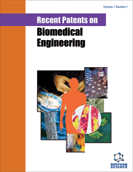Abstract
Intervertebral discs allow the spine to transfer loads and motion in the upper body. They redistribute compressive loads, resist rotational and shear forces, and at the same time impart various motions in each of the spinal vertebral segments. Pain and disability result from degenerative disc disease, herniated discs, and injuries from trauma. Reduced movement and pain are associated with these conditions and may result in collapse, spontaneous or post-traumatic tears, and additional transferred pressure on surrounding nerves. A shift in the mechanical axis of the load may also occur, causing irritation and pain as well as abnormal bone growth. When non-surgical methods are ineffective at treating these disorders, surgical alternatives include fusion, considered to be gold standard, and disc replacement. Disc replacement is proposed in the literature to provide higher joint mobility, shorter surgery time, shorter recovery time and potentially, a decreased occurrence of adjacent level degeneration, though long term outcomes are not available at this time. Many disc replacement devices are patented and available for the cervical and lumbar spine as well as of the replacement of the nucleus. This paper classifies the devices into the following: a) cervical devices (23 devices), b) lumbar devices (29 devices), and c) nucleus replacement (20 devices) and summarizes the device characteristics, materials used, their design features, and regulatory status. A limited amount of biomechanics and outcome results are also reported for select few cases.
Keywords: Disc replacement, Lumbar, Cervical, Nucleus, Arthrodesis, Biomechanics.
 2
2

